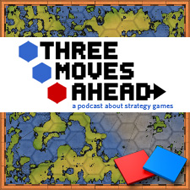Not so long ago, I wrote my impressions of Gamer’s Quarter. It’s a very long, very text heavy and very interesting attempt to make a “new” gaming magazine. No reviews (at least as traditionally understood) and a little heavy on the first person side of writing. Is it New Games Journalism? Is it just traditional media criticism? Whatever it is, it made quite a few people sit up and take notice.
Now we have The Escapist. Also available on PDF, it is much easier to browse online. People who follow this sort of thing should have already heard of some of the writers (including Kieron Gillen, the “father of New Games Journalism”).
Each issue will address a specific topic in the gaming world and a publishing schedule is already available. They are accepting submissions for future issues.
My impressions from this first issue are mostly positive. There isn’t a lot here that hasn’t been said before in one form or another. The question of what being a gamer really means, the effects that the mainstreaming of gaming will have on the hobby/industry, and the Demuzio Law are all well trod paths. All are exceptionally well written, and this alone makes The Escapist worth a quick browse.
But making every issue a “theme issue” will probably separate The Escapist from the pack. If there are different contributors every month or so, the reader will be served by a variety of voices exploring different sides of the same issue. (We game bloggers will trying a variant of this in a Gaming Roundtable that is currently in the works.)
The thing about the Internet, of course, is that there is room for a lot of online zines, though probably not enough dollars to make more than a couple commercially successful ventures. At this point, neither The Escapist nor Gamer’s Quarter are ready to make that leap, and it’s not even clear if they would choose to.
It does mean that there are now multiple professional looking online magazines for people who prefer to have serious gaming criticism that has been edited. Even though I blog, and consider myself a fair to good writer, the importance of good editing cannot be overlooked in quality control.
I hope that both The Escapist and Gamer’s Quarter find consistent audiences.

